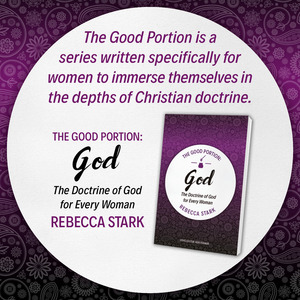 As you know, I’m participating in this round of Reading Classics Together at Challies.com. This week I read the third chapter of John Stott’s The Cross of Christ. This chapter, titled Looking Below the Surface, answers the question, “What was there about the crucifixion of Jesus which, in spite of its horror, shame and pain, makes it so important that God planned it in advance and Christ came to endure it?”
As you know, I’m participating in this round of Reading Classics Together at Challies.com. This week I read the third chapter of John Stott’s The Cross of Christ. This chapter, titled Looking Below the Surface, answers the question, “What was there about the crucifixion of Jesus which, in spite of its horror, shame and pain, makes it so important that God planned it in advance and Christ came to endure it?”
Stott answers this question with four points:
- Christ died for us.
- Christ died for us that he might bring us to God.
- Christ died for our sins.
- Christ died our death, when he died for our sins.
Of course, he doesn’t just list these points, but fleshes them out. I’m going to leave, however, them as bullet points and move on to the second section of this chapter, where Stott looks at three of the main scenes from Jesus’s last day—the Last Supper, the Garden of Gethsemene, and Jesus’s cry of dereliction on the cross—to see what Jesus said about what was happening and what would happen. Do the four points listed above “fit the facts” that are recorded for us in the gospels?
The Last Supper
Jesus’s words and actions teach us his own explanation of the meaning and purpose of his death.
- Christ’s death was central to his mission:
The Lord’s Supper, which was instituted by Jesus, and which is the only regular commemorative act authorized by him, dramatizes neither his birth nor his life, neither his words nor his works, but only his death. Nothing could indicate more clearly the central significance that Jesus attached to his death. It was by his death that he wished above all else to be remembered.
- Christ’s death took place for the purpose of establishing a new covenant and obtaining forgiveness of sin. His blood is “the blood of the new covenant, which is poured out for many for the forgiveness of sins.”
- Christ’s death needs to be appropriated personally. The dramatization in the Lord’s Supper
did not consist of one actor on the stage with a dozen in the audience. No, it involved them as well as him. … The eating and drinking were, and still are, a vivid acted parable of receiving Christ as our crucified Saviour and of feeding on him in our hearts by faith.
The Garden of Gethsemane
The “cup” symbolised the agony of enduring the judgment of God that our sins deserved.
God’s purpose of love was to save sinners, and to save them righteously; but this would be impossible without the sin-bearing death of the Saviour.
And so Jesus resolved to drink the cup; he willingly went finish his work by enduring the agony of the cross.
The Cry of Dereliction on the Cross
This section focuses on the meaning of Jesus’s cry, “My God, my God, why have your forsaken me?”Stott understands these words to mean that “an actual and dreadful separation took place between the Father and the Son.” This is one place where I’ll have to disagree with him, although I don’t have time to explain my reasoning in this post. Still, I do think the Jesus’s cry shows us something of his anguish on the cross. And when he cries out, “It is finished,” he is indeed declaring that he has accomplished our salvation.
Stott sums thing up by saying that the cross enforces these three truths:
- Our sin must be extremely horrible if there was no other way to forgive it but that Christ should bear it himself.
- God’s love must be wonderful beyond comprehension if he “pursued us even to the desolate anguish of the cross….”
- Salvation must be a free gift. Christ declared it “finished.” What is left for us to contribute?
And so ends the first part of The Cross of Christ. Next week’s reading is from the second part, The Heart of the Cross.
 Thursday, September 1, 2011 at 11:19PM
Thursday, September 1, 2011 at 11:19PM 



